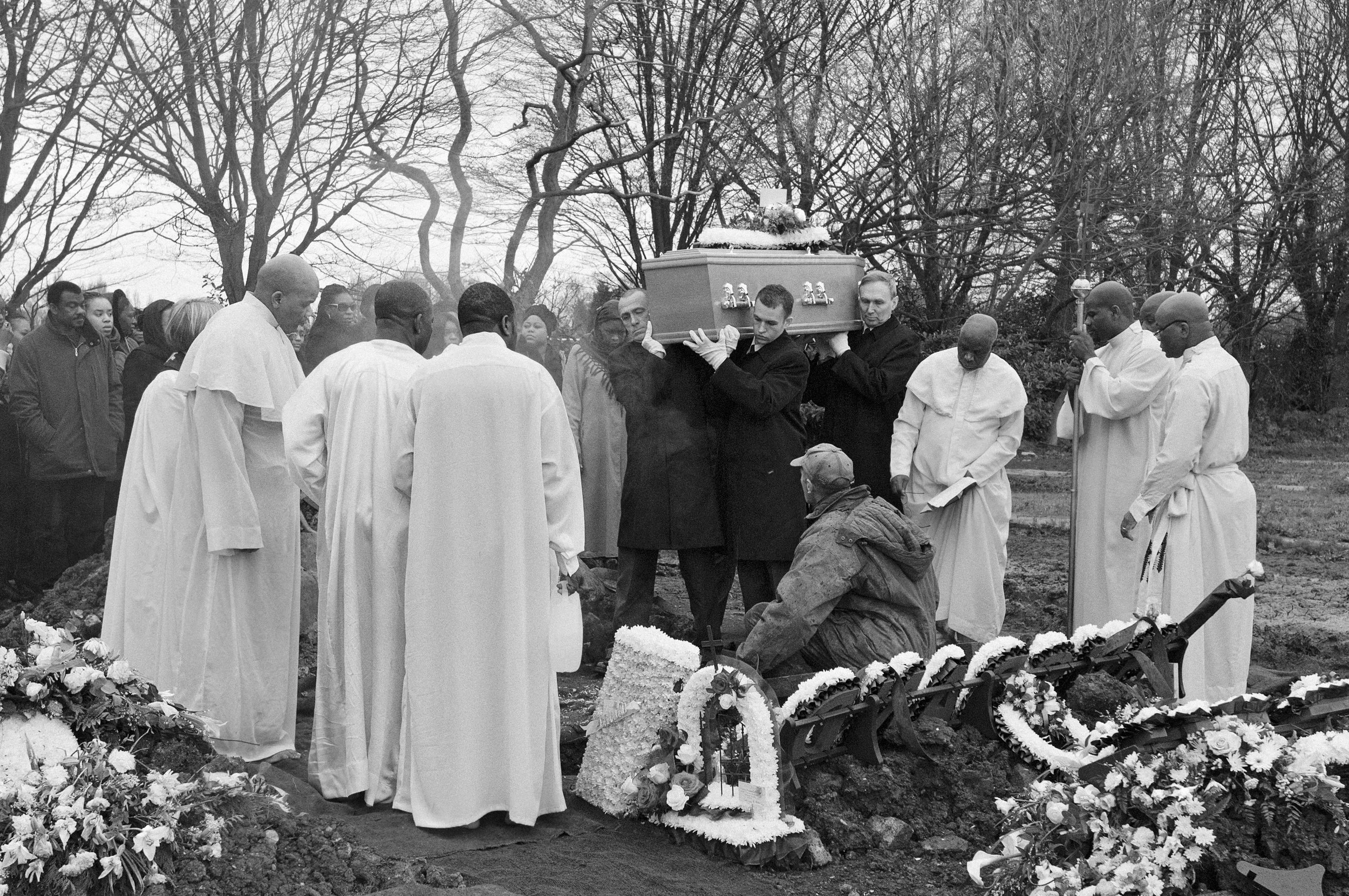Gravediggers In South London
How is it to work in a job that is physically and emotionally challenging and has negative connotations attached to it? How does one identify with such an occupation? How did they become gravediggers? Do they still use a shovel?
With these questions and many more in mind, I arrived early one morning at Camberwell New Cemetery to meet the cemetery manager, Terry Connor. Before meeting the gravediggers he warned me that most photographers and camera crews have been rejected by the gravediggers in the past.
Fortunately I was accepted and was soon fascinated by their working world, functioning on the outskirts of society. I wonder whether the average person ever even thinks of gravediggers, as typically when we cross their path, we tend to be overwhelmed with other feelings and our attention is elsewhere.
Photographing my first funeral I discovered that mourners tend to stay on for the closure of the grave, which according to the gravediggers is the most difficult part of the job.
Once the coffin is lowered, the gravediggers wait nearby for the end of the funeral. In order not to be disruptive or disrespectful they have developed a way of communicating among each other by whispering and using sign language.
The use of the mechanical digger has been made it impossible not to be too invasive. Fulfilling their motto, ‘You show yourself but you can’t be seen’ is now almost unfeasible.
These gravediggers featured in my project are four of the last seven in the whole borough of Southwark. In other parts of London contractors are employed to do their work. Even though every year they claim that they intend to quit and jokingly say ‘It sometimes feels like a dead-end job’, it is obvious that they have built up a strong mutual bond with each other that they describe as being comparable to a little family.
Thanks to Garry Pearson (21 years as digger), Steve Saunders, Steve George (26 years) and Jeff Smith (5 years), London 2007.
Published in the Sunday Times Magazine as part of the Ian Parry Award Exhibition














